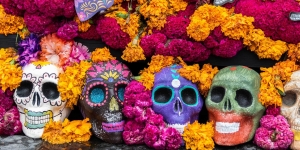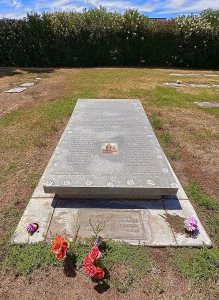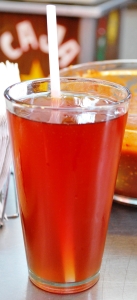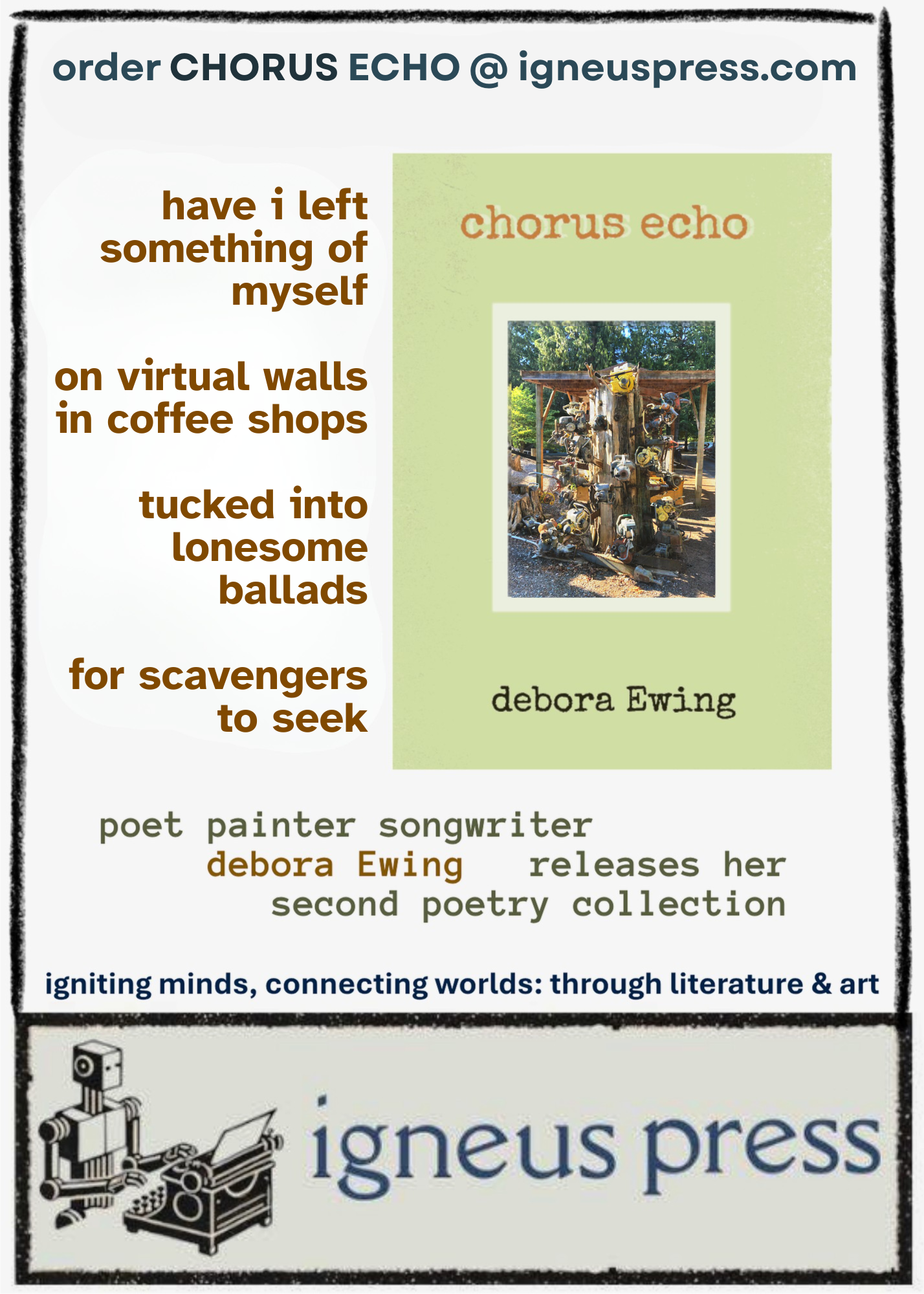Many Days of the Dead
A Uniquely Mexican Holiday from the outside & in
 Before the days of easy internet access, Stefani Rosenberg started down a rabbit-hole that she’s still exploring today.
Before the days of easy internet access, Stefani Rosenberg started down a rabbit-hole that she’s still exploring today.
Stef describes herself as being a person blended of three cultures: Jewish, American, and Mexican. She’s open to exploring the deeper meanings of any of them – of anything, really. But we’re here to talk about Día de los Muertos.
“Just for a summer after graduating high school, I lived with a family in Mexico City,” Stef told me. “There were about five of us Americans. We had a sleeping area and our foods and everything was prepared for us. So it was as close an experience as being part of a family.
“While I was there, we would go to school every day at the university, and towards the end they said we had to start getting ready for final exams. I kept thinking about it and thinking, I don’t really want to study.
Why don’t we just quit and go travel during the time we have left of the summer? So we did, and instead of taking final exams, we went to Oaxaca and Michoacán. And that was a better education than taking these exams.
“It was a very smart move on my part. But being with the people is something has stayed with me my entire life. I’ve been thinking about it a lot lately.
I did learn about Day of the Dead in one of the classes I was taking, which were all in Folk music, Folk dance, Folk art and archeology. I hung on every word. Everything I learned, I embraced.
When I traveled instead of taking exams, we went to a museum where there was an exhibit of photographs. There was a photograph of a real person who was being mourned by loved ones, and he was wrapped in a shroud. And I took a picture of that – a picture of a picture. An 18-year-old was so struck by a picture of a person getting ready to be buried that I would want to photograph it.”
Stefani’s mother was born to Italian immigrants and didn’t speak English until first grade. The culture and the language being spoken gave Stefani a love of other languages, which helps explain why learning Spanish came easily.
Stefani celebrates Chanukah, including information about the Sephardic (Crypto) Jews of the Inquisition. Many people living in the United States have discovered that they’re descendants of these Jews. If you’re curious, read The Mezuzah in the Virgins Foot by Trudi Alexy.
“Passover is a major production. I prepare a feast with a friend. We spin the globe and prepare food from whichever country it lands on (where Jews live.) So over the years we have cooked food from Ethiopia, Greece, Brazil, Mexico, Japan, China and Laos, Italy, France, Morocco and many more. One of the most memorable was when I told my friend that her people were truly once enslaved, so we did a soul food meal and sang songs such as No More Auction Block , Go Down Moses, Swing Low, Sweet Chariot and others.
When we did Puerto Rico, we sang the song from the movie West Side Story “(I Like to Be in) America,” with the singers at the table divided into two groups one side responding to the lyrics.
I make champurrado, which is a Mexican beverage – if you picture a really thick hot chocolate. It’s going to taste a little bit like a warm, sweet, liquidy tamal. It’s a delicious beverage. I make it all year long.
For Day of the Dead, we raise our cups of champurrado and I say a little toast: El muerto al cajon, el vivo al fieston.
Loosely translated: the dead one can go to its box; we the living can go to a grand party.
This song is particularly important to me because I bravely submitted my own translation of the song to a lyric website. I have researched it for many years, since I learned it in 1966. I’ve been fearful to check to see if people have responded because my translation is poetic and different than all the many others posted by professionals. It was a great relief and wonderful surprise to find that it had received five messages of thanks.
The Boat of Gold
My love,
I’m going to the harbor
where a boat of gold is
waiting to ferry me away.
I’m leaving.
I have only come
to say goodbye.
Goodbye, my love.
Farewell, for now
and forever.
Goodbye.
My eyes will never again gaze upon your face
Nor will you hear my song
My grief is so deep the seas swell with my tears.
Goodbye, my dearest.
Farewell for now,
and forever.
Goodbye.
La Barco de Oro
Yo ya me voy al puerto donde se halla
La Barca de Oro que debe conducirme
Yo ya me voy; solo vengo a despedirme
Adiós, mujer, adiós, para siempre adiós
No volverán
Mis ojos a mirarme
Ni tus oídos escucharan mi canto
Voy a aumentar los mares con mi llanto
Adiós, mujer, adiós, para siempre adiós
Stefani went on to tell me, “I learned from a cookbook a little nursery rhyme type thing: There’s a skeleton in a cornfield eating cold tortillas. And to get fat again, to get fat, he’s trying to eat. And so I told people that I worked with, ‘if you can find me this song in Spanish…’ no one I worked with knew it.
“I started using it with my students because it was just hilarious to me. I was presenting it because it doesn’t say he was eating cold tortillas, it said without salt. The way I made it my own, since I never heard anyone doing it, and no one I knew it, is this: I added a hand-clapping thing, ‘without salt, without salt, without salt, without salt.’ That’s an example of how you can embrace something and make it your own in a good way. You don’t commercialize it. You don’t exploit it.”
La Media Muerte
The One that was Half Dead
Estaba la muerte un dia
Sentada en un arenal,
comeindo tortilla fria
Pa’ver si podia engordar.
Setadada la media muerte sentada en un tecomate,
diciendole a los muchachos v
vengan, beban chocolate
Estaba la muerte seca,
Sentada en un carrizal
Comiendo tortilla dura
Y frijolitos sin sal,
Sin sal, sin sal…Estabe la muerte un día
Sentada en un arenal,
comiendo una tortilla fría
Para ver si podia engordar.
Estaa la media muerta
estaba sentada en una tecomate ,
diciéndoles a los niños: «Coman, tomen chocolate caliente».
Estabe a muerte seca ,
Sentada en un carrizal
Comiendo una tortilla dura
Y frijolitos sin sal,
Sin sal, sin sal…
La Media Muerte
The One that was Half Dead
Death was there one day.
Sitting in a sandy area,
eating a cold tortilla
To see if she could gain weight.
She was half dead
She was sitting in a gourd,
telling the children: “Eat, drink hot chocolate.”
She was dead dead,
Sitting in a reed bed
Eating a hard tortilla
And unsalted beans,
With no salt,
No salt
No salt,
No salt
…and this is the big question, isn’t it? Where’s the line – what’s the difference – between appreciation and appropriation?
Hannah Mayree of the Black Banjo Reclamation Project says it like this:
- Be careful – realize that you’re in territory that isn’t your own
- Be respectful – acknowledge those who belong in the space
- Do your research – don’t come empty-handed. Come with the gift of recognition, demonstrating that you really want to know more.
I’ll add this: Accept what’s given you gracefully. People don’t have to share their culture with you. They can set boundaries where they want. Tim Z. Hernandez , while researching for his books, often found that families were unwilling to share such personal stories, even to another person of Mexican heritage. He learned to wait for them to come back to him with a story that wanted to be told.

By Elnogalense – Own work, CC BY-SA 4.0, https://commons.wikimedia.org/w/index.php?curid=136456403
Also at this time of year Stefani prepares an altar to celebrate Dia de los Muertos.
“I recently learned that photographs have been found of two of the “Deportees” mentioned in the song by Woody Guthrie. So I’m going to display images that I have printed and decorated of an airplane beaded in the style of the Huichol Mexicans, and beaded skulls with each the name of one of the crash victims attached. A friend passed away a few days ago, and in his memory I am also decorating with monarch butterflies. It’s believed that they return at the same time of year as when Day of the Dead is observed, and bring the soul of the departed loved one with them.

Cecilia and Joe Sierra in their restaurant, New Horizon
Joe Sierra grew up in Blue Island, a town just outside of Chicago. I asked him whether his family celebrated Day of the Dead , and how that celebration might have changed over the years.
“Yes, we did, like most Mexican families. It wasn’t the same as if we were in Mexico because that involved actually going to the cemetery and, as tradition goes, we would decorate the graves or tombs of our deceased relatives.
Here we couldn’t go to the cemeteries, because they were closed, so tradition became that we would create an altar, decorate it, and place pictures of our families that have passed. As it’s believed, they always do visit.
We would then create offerings such as their favorite meals, or fruits or candies that they would like, and then it evolved into, as always, liquor: their favorite drink we would make, and leave it there as an offering to them in remembrance. The one traditional drink would be a warm punch made with different fruits and cinnamon and sugar cane.

By Thelmadatter – Own work, CC BY-SA 3.0, https://commons.wikimedia.org/w/index.php?curid=7261863
Tepache is a fermented drink made from pineapple peels and cores, sweetened with piloncillo which is similar to brown sugar, and spiced with ingredients like cinnamon and cloves. You let it ferment for a few days, then it becomes slightly carbonated. It’s very delicious almost like a sweet beer.
Although the Mexican culture has for the most part remained the same, there have been, from my point of view, changes that sort of blur the cultures of Mexico and of the US I mean, some families have almost forgotten about the Day of the Dead. It is a religious tradition, in the fact that as most Catholic families we would go to church. I remember that people would have lists of their family members that have passed and would want their names to be read off during the mass. In that way they would be remembered by the most people possible. Because as the belief goes: “No one is really dead until their name is forgotten or not mentioned anymore.”
My wife, being from Guadalajara – her perspective is different from what she sees here. The differences and traditions of the different regions of Mexico are unique as the people themselves. I have to thank my wife especially, because she’s showing more about Mexico than I ever would’ve known otherwise. She’s taking me to places where they still speak the original dialect. It’s not Spanish; it’s their own language.
“I went to the actual place where the origins of the movie Coco started. Coco was an actual person who passed away, just recently, in that town. There are people that still dress – how can I say it – like the indigenous peoples before, and still speak their language.
But things have changed there, too. What was a tradition of going to visit their families in a cemetery has turned into drunken parties and fights breaking out because people try to show off the money that they don’t have, and that their relative was more important than anyone else’s. In the larger cities, children are more likely to celebrate Halloween.”
Joe’s father first came to the United States as a bracero which was later turned into a racial slur as they would Mexican “brazers.”
“From what my father told me, it was a very tough life. My wife, after she moved in with me, was visited by my father. He told her that everything was going to alright. It was a surprise as she described him even down to the sombrero that he liked to wear.”
I shared this memory with Joe: My grandmother visited me once in California just randomly; I asked my mom if anything had happened or if it was a day that would have been special to Grammie. Mom said they’d placed her headstone a few days prior – that would have been important to her. Grammie was always orderly.
Last year i made a day of the dead altar for my grandmothers and son, in case they wanted to come visit. The marigolds left seeds and grew back this year. So this year I made another altar.
As Joe said, it’s believed they always do visit.
 debora Ewing writes, paints, and screams at the stars because the world is still screwed up. She improves what she can with music collaboration, peer-review at Consilience Poetry Journal, or designing books for Igneus Press. Follow @DebsValidation on X and Instagram. Read her self-distractions at FolkWorks.org and JerryJazzMusician.com.
debora Ewing writes, paints, and screams at the stars because the world is still screwed up. She improves what she can with music collaboration, peer-review at Consilience Poetry Journal, or designing books for Igneus Press. Follow @DebsValidation on X and Instagram. Read her self-distractions at FolkWorks.org and JerryJazzMusician.com.






